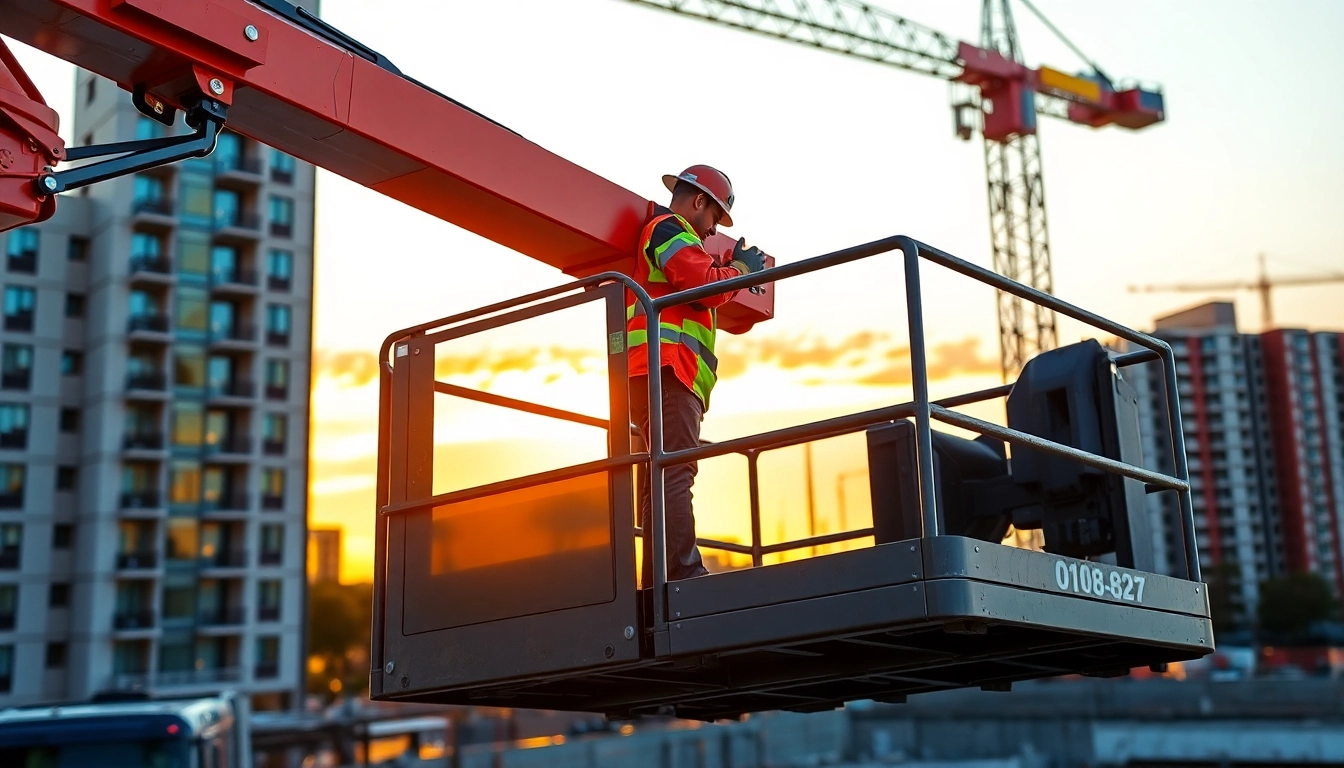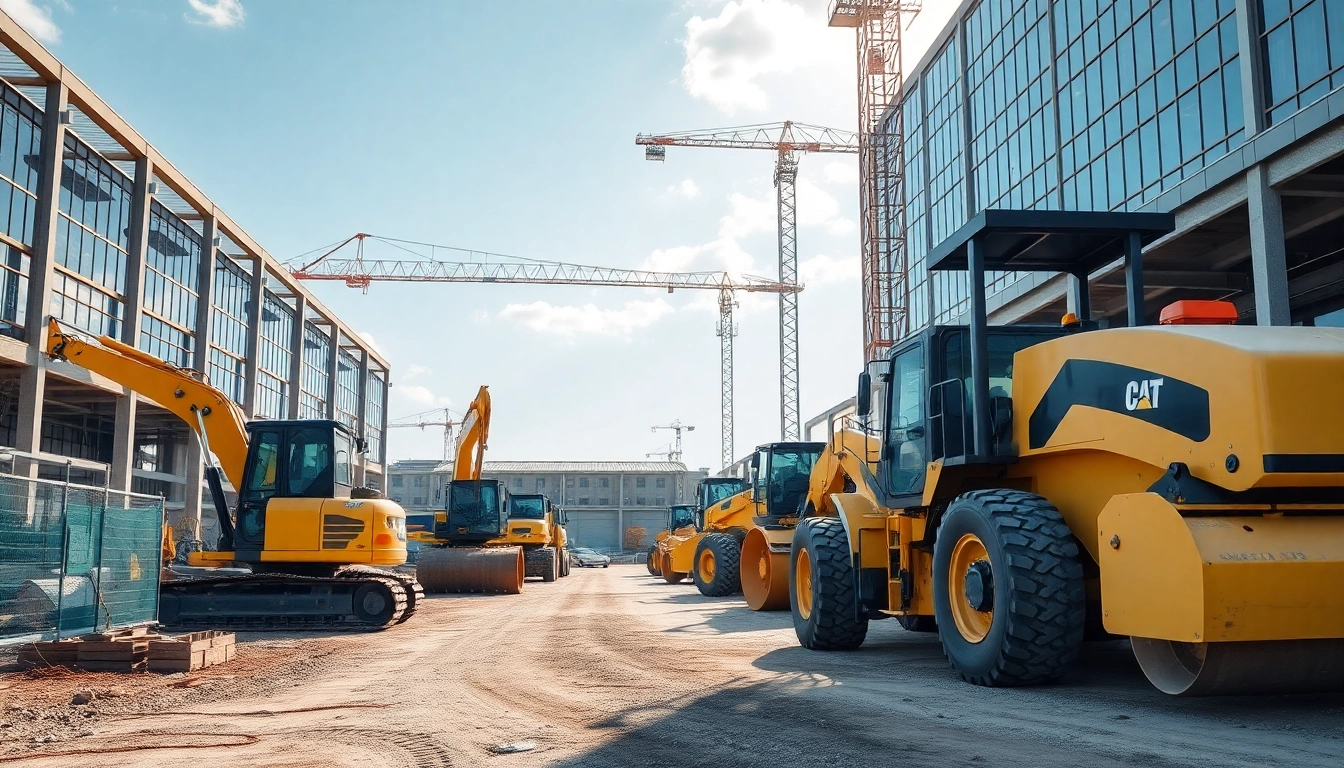Understanding the Benefits of Boom Lift Rental for Your Projects
In the realm of modern construction, maintenance, and industrial projects, access to elevated work areas is paramount for safety, efficiency, and precision. Boom lifts have revolutionized how professionals approach tasks at height, offering a versatile, safe, and efficient method for working above ground level. While owning a boom lift might seem like a straightforward solution, many businesses and contractors are increasingly turning to boom lift rental services to meet their needs. This strategic choice not only enhances operational flexibility but also eliminates many of the financial and logistical burdens associated with ownership.
Understanding the benefits of renting a boom lift is crucial for making informed decisions for your projects. This comprehensive guide explores the advantages over ownership, how to select the right equipment, cost-effectiveness, and practical insights to maximize the value of your rental experience.
Key advantages over ownership
Choosing to rent a boom lift offers significant benefits compared to purchasing one outright. Here are some of the most compelling reasons:
- Cost Savings and Budget Flexibility: Purchasing a boom lift involves a substantial upfront capital expenditure, often ranging from tens to hundreds of thousands of pounds depending on the model. Maintenance, storage, insurance, and depreciation costs further add to this financial burden. Conversely, rental costs are predictable and typically involve a daily, weekly, or monthly fee, allowing firms to manage their cash flow more effectively.
- Access to Latest Technology: The construction and access industry continuously evolve with new safety features, enhanced performance capabilities, and energy-efficient models. Renting provides immediate access to the latest equipment without the need for costly upgrades or replacements, ensuring projects benefit from state-of-the-art machinery.
- Operational Flexibility: Different projects may require varying heights, reach capabilities, or types of boom lifts (e.g., articulated, telescopic, electric, diesel). Renting allows companies to select specific equipment tailored for each task, avoiding underutilized or unsuitable machinery lingering on-site after project completion.
- Reduced Maintenance and Storage Hassles: Rental agreements typically include maintenance, inspections, and repairs aligned with safety standards. This relieves the rental client from ongoing maintenance costs and logistical concerns like storage and security, especially for equipment used sporadically.
- Lower Risk Exposure: Market dynamics, project scope changes, or unforeseen delays can render ownership less advantageous. Renting offers an adaptable solution, enabling businesses to scale their equipment needs up or down without financial penalties.
Evidently, renting boom lifts allows organizations to optimize their operational efficiency, financial management, and safety compliance, translating into increased productivity and reduced project risks.
Choosing the right boom lift type for your needs
Selecting the appropriate boom lift is critical for ensuring safety, efficiency, and cost-effectiveness. The decision depends on various factors, including the nature of the job, height requirements, workspace constraints, and environmental conditions.
Types of Boom Lifts
The primary types of boom lifts include:
- Articulating Boom Lifts: Featuring hinged sections that provide multiple points of movement, articulated booms are ideal for navigating around obstacles, accessing hard-to-reach areas, and working at varied heights. They are suitable for complex indoor and outdoor projects, such as maintenance of high ceilings, building facades, or intricate industrial facilities.
- Telescopic (Straight) Boom Lifts: Characterized by a straight extendable arm, these lifts excel in providing maximum height and horizontal outreach. They are well-suited for large-scale construction, wind turbine maintenance, or applications requiring a significant vertical reach.
- Hybrid and Electric Boom Lifts: Designed for indoor use or environments where emissions and noise reduction are critical. Electric models are quieter, produce no exhaust, and often have excellent maneuverability.
- Rough Terrain Boom Lifts: Built on rugged chassis with four-wheel drive, these are suitable for uneven outdoor surfaces and rough environments such as construction sites or rural areas.
Matching Equipment to Project Requirements
Here are crucial considerations to determine the best boom lift type for your project:
- Working Height: Decide the maximum height needed; choose models with a working height comfortably above your target.
- Horizontal Outreach: Assess whether your task requires extending the lift horizontally to access areas or if vertical height is the primary concern.
- Workspace Constraints: Indoor confined spaces may necessitate compact electric models, whereas outdoor open spaces might accommodate larger, diesel-powered lifts.
- Obstacle Navigation: The presence of obstacles, overhead obstructions, or uneven terrain guides the choice between articulated and telescopic lifts.
- Environmental Considerations: Emissions, noise levels, and site regulations influence whether electric or hybrid models are appropriate.
By thoroughly analyzing these criteria, you can select the optimal boom lift that aligns with your project scope, safety requirements, and budget.
Cost-effectiveness and flexibility analysis
When deliberating between owning or renting a boom lift, a detailed cost and flexibility analysis provides clarity. While ownership might appeal to frequent users through potential long-term cost savings, rental often proves superior for most projects due to its adaptability and lower recurring expenses.
Cost Components in Rental and Ownership
| Ownership | Rental |
|---|---|
|
|
Long-Term Cost Considerations
For frequent, ongoing projects, investing in a boom lift might seem economical; however, factor in usage frequency, maintenance logistics, and residual value. For infrequent or short-term projects, renting significantly reduces financial risks and capital tie-up.
Flexibility Advantages
The ability to select specific models tailored for each job, avoid prolonged storage obligations, and upgrade to newer technology swiftly underscores the unrivaled flexibility of rental services. This operational adaptability often translates into improved project timelines and quality.
To optimize cost-effectiveness, analyze your project’s scale, duration, and specific equipment requirements, enabling you to devise a strategic rental plan that maximizes ROI.
How to Select the Perfect Boom Lift Rental Provider
Assessing equipment quality and safety standards
Safety is non-negotiable when working at height. Verify that the rental provider adheres to industry safety standards set by organizations such as PASMA, IPAF, and ISO. Confirm that all equipment is regularly inspected, well-maintained, and certified. Request documentation or certificates to ensure compliance.
Delivery, setup, and support services
Reliable providers offer comprehensive support, including prompt delivery, professional setup, and removal. Ask about delivery lead times, site assessment, operator assistance, and after-sales service. Effective support minimizes downtime and ensures safety on-site.
Customer reviews and reputation in the industry
Research the provider’s reputation through customer feedback, testimonials, and industry references. A reputable rental company will have a track record of safety, reliability, and customer satisfaction. Examine their responsiveness, transparency in pricing, and after-rental support services.
Additional factors to consider
- Insurance options: Ensure coverage for damages, accidents, or equipment failure.
- Flexible rental terms: Short-term, long-term, or ad-hoc arrangements that match your project timeline.
- Technical expertise: Access to knowledgeable staff who can advise on equipment selection and operation best practices.
Best Practices for Safe and Efficient Boom Lift Operation
Preparing the site and equipment inspection
Prior to operation, conduct a thorough site survey assessing ground stability, overhead hazards, and access routes. Inspect the boom lift for any damages, fluid levels, brakes, controls, and safety devices. Confirm that the equipment’s safety certifications are current.
Operator training and safety protocols
Only trained and competent personnel should operate boom lifts. Adhere to manufacturer instructions, employ fall protection, and enforce safe working practices. Use PPE such as helmets, harnesses, and high-visibility clothing. Conduct a safety briefing at each shift change or site visit.
Maintenance tips for rental boom lifts
Maintain frequent checks on critical components, including tires, hydraulics, and electrical systems. Report any anomalies immediately and keep detailed inspection logs. Following proper maintenance prolongs equipment lifespan and safeguards against accidents.
Maximizing Productivity with Appropriate Usage Strategies
Planning tasks around lift capabilities
Align your project schedules with the lift’s operational limits—priming tasks that match the machine’s height, reach, and weight capacities. Use detailed planning to avoid overloading or operating beyond rated specifications.
Scheduling and downtime management
Optimize rental costs by scheduling work in blocks, minimizing downtime, and overlapping tasks efficiently. Maintain ready access to backup equipment if necessary to prevent delays.
Leveraging modern features for optimal performance
Take advantage of advanced boom lift features such as joystick controls, stability sensors, and automation capabilities to enhance safety, speed, and precision. Training operators in these features maximizes their utility and safety.
Understanding Costs and Rental Terms for Boom Lift Hire
Pricing models and budgeting tips
Rental costs vary based on machine type, height, duration, and provider. Establish a clear budget by requesting quotes and comparing inclusions. Consider potential hidden fees such as delivery, setup, insurance, and damages.
Rental duration and cancellation policies
Most providers offer flexible rental periods—daily, weekly, monthly. Confirm cancellation terms, administrative charges, and conditions for extending or shortening the agreement. Plan ahead to avoid unnecessary penalties.
Additional charges and insurance considerations
Insurance coverage is critical to mitigate risks. Many rental companies include basic insurance; additional coverage options might be available for higher protection. Clarify liability limits and what damages are covered.
In conclusion, understanding the complex landscape of boom lift rental—from choosing the right equipment to managing costs and safety—empowers your organization to execute projects more efficiently, safely, and economically. Partnering with a reputable rental provider, leveraging modern technology, and applying best operational practices will ensure your height access needs are met seamlessly and reliably.



